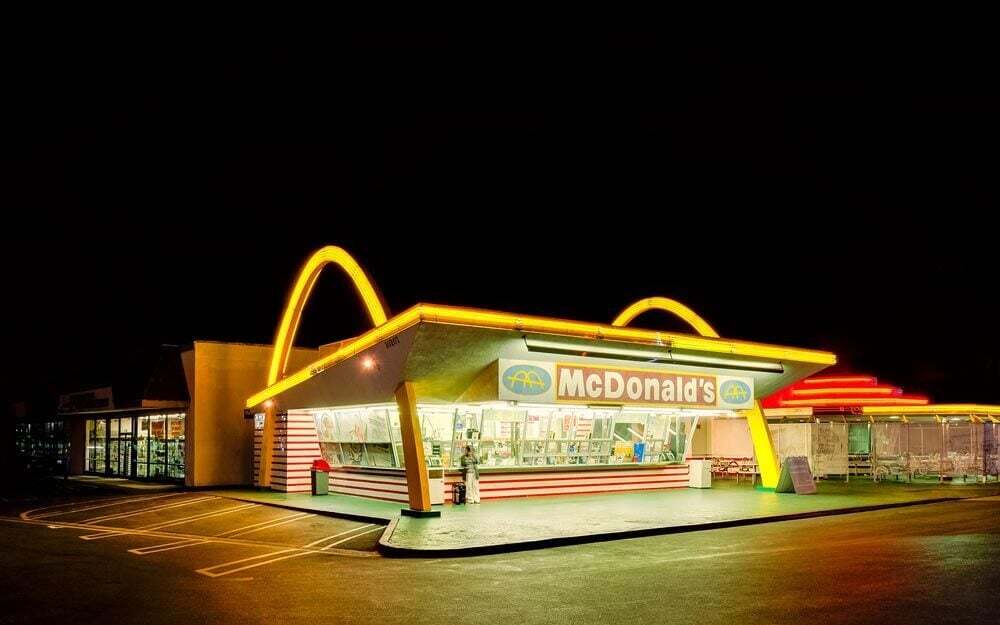
History of McDonald's
10 minutes, 58 seconds
-3 Views 0 Comments 0 Likes 0 Reviews

machines. Their innovative approach to food service didn’t just serve burgers; it slapped the "fast" right into fast food. This radical idea of quick, consistent service was their golden ticket, laying the groundwork for what McDonald’s would become. ## 4. The Birth of the Franchise Model### 4.1 The First Franchise: Ray Kroc's InvolvementEnter Ray Kroc, the man who would take the McDonald’s idea and put it on steroids. Kroc was a milkshake machine salesman when he stumbled upon the McDonald brothers’ restaurant and recognized its potential for franchising. In 1955, he opened the first McDonald's franchise in Des Plaines, Illinois, and suddenly the floodgates of fast food opened wide. Kroc’s vision transformed McDonald's from a local eatery into an empire, creating the blueprint for a franchise model that countless businesses would later emulate.### 4.2 The Franchise System: Structure and ImpactKroc’s franchise system was more than just about slapping the McDonald’s name on existing restaurants. He implemented strict guidelines, from menu items to quality control and even décor, ensuring that every McDonald's experience was consistent – a Big Mac in New York tasted just like one in Tokyo. This replicable model allowed McDonald's to expand rapidly, bringing its iconic brand to millions of customers worldwide. With this structure in place, McDonald's not only thrived but ushered in a new era of fast food, solidifying its status as a global icon. And there you have it! From humble beginnings to a fast-food titan, the story of McDonald's is a delicious tale of innovation, entrepreneurship, and not-so-secret sauce.# 5. The Menu Evolution: From Burgers to Breakfast## 5.1 The Original Menu: A Focus on SimplicityWhen the first McDonald’s opened its doors in 1940, the menu was as straightforward as a two-lane highway. The “Speedee Service System” offered a limited selection designed to make fast food… well, fast! Featuring just nine items, including the iconic hamburger, fries, and milkshakes, the focus was on quality and speed. No fancy truffle oils or quinoa patties here—just pure, unadulterated Americana served up quicker than you can say “super size me.”## 5.2 Introduction of New Items and InnovationsAs the lines grew longer and the customers’ appetites evolved, McDonald’s began adding more items to the menu like a kid at an all-you-can-eat buffet. The introduction of the Big Mac in 1968 was a game-changer, solidifying the chain’s reputation for delivering hearty meals. Breakfast options made their debut in the '70s, leading to the birth of the beloved Egg McMuffin—because who doesn’t want to eat breakfast in a car? Over the decades, McDonald’s embraced culinary creativity while staying true to its fast-food roots, ensuring that there would always be something for everyone (even your picky cousin Kevin).# 6. McDonald's Expansion: A Worldwide Phenomenon## 6.1 Domestic Growth in the United StatesMcDonald’s didn’t just stop at California; oh no, my friends! It exploded across the U.S., going from one humble restaurant to thousands by the 1980s. The secret sauce? A blend of savvy marketing, a growing love for fast food, and the ability to make everything feel like a mini-celebration. Each new location brought with it a promise of fast service and even faster smiles, making McDonald’s as American as apple pie—if apple pie came with a side of fries.## 6.2 International Expansion StrategiesWith a successful formula in hand, McDonald’s turned its sights overseas, adapting to global tastes while remaining true to its golden arches. From a McCurry Pan in India to McLobster rolls in Canada, the chain understood the importance of local flavors. Each country got its own twist on the classic menu items, creating a world where fried potatoes speak many languages. The result? A worldwide phenomenon with over 38,000 outlets in more than 100 countries. Now that’s a lot of Happy Meals!# 7. Cultural Impact and Marketing Innovations## 7.1 Iconic Advertising CampaignsWith a catchy jingle and a colorful clown, McDonald’s changed the game in advertising. The iconic "You Deserve a Break Today" campaign became a cultural touchstone, coaxing millions into their nearest drive-thru. Who could resist the siren call of a Big Mac paired with that smile-inducing Golden Arches logo? The chain has consistently embraced humor, catchphrases, and memorable mascots, creating a brand presence that feels like an old friend—one who just happens to have a bottomless supply of fries.## 7.2 McDonald's Role in GlobalizationMcDonald's isn’t just a fast-food chain; it’s a cultural ambassador. By spreading its menu across continents, it’s also fostered a unique form of globalization—one burger at a time. The Golden Arches became a symbol of modernity and consumer culture, representing the intersection of local and global. Whether serving up a classic cheeseburger in the U.S. or a sweet-and-sour McNugget in Asia, the chain has shown how food can bridge cultures, even if the result does sometimes involve slightly confused taste buds.# 8. The Future of McDonald's: Adapting to Changing Tastes## 8.1 Embracing Sustainability and Health TrendsIn a world increasingly concerned with sustainability and health, McDonald's is adjusting its menu like a well-tailored suit. They’re reducing plastic straws, working on sourcing sustainable ingredients, and introducing healthier options that don't taste like cardboard. Picture an aisle of veggie burger offerings and salads that don’t have all the appeal of wilted lettuce—it's a brave new world! McDonald’s isn’t just about filling bellies anymore; they’re also looking to fill hearts with eco-friendly practices.## 8.2 Technological Advancements and Customer ExperienceAs if their fries weren’t already genius enough, McDonald’s is taking a big bite out of technology to enhance customer experiences. When mobile ordering apps and self-service kiosks became the new norm, the chain jumped in with both feet, ensuring not a single fry gets left behind. With AI-powered coffee machines and delivery partnerships, McDonald’s is poised to keep up with the fast-paced world we live in. Who knew the future could taste so good? As they say, “Hold onto your hats and your trays—this ride is just getting started!”In conclusion, McDonald's stands as a testament to the power of innovation and adaptability in the fast-food industry. From its modest beginnings to its expansive global presence, the brand has continuously evolved to meet the changing tastes and preferences of consumers. As McDonald's faces new challenges and opportunities in an ever-evolving market, its commitment to quality, service, and community remains at the forefront. Whether through menu diversification or technological advancements, McDonald's is poised to continue its legacy as a beloved dining option for generations to come.
Frequently Asked Questions
1. When was the first McDonald's restaurant opened?
The first McDonald's restaurant was opened by Richard and Maurice McDonald in San Bernardino, California, in 1940.
2. Who is Ray Kroc and what role did he play in McDonald's history?
Ray Kroc was a businessman who joined McDonald’s in the 1950s and played a crucial role in expanding the franchise model, leading to the global growth of the brand we know today.
3. How has McDonald's menu changed over the years?
McDonald's menu has evolved significantly since its inception, starting with a simple selection of burgers and fries to include a wide variety of items, including breakfast options, salads, and healthier choices to cater to changing consumer preferences.
4. What impact has McDonald's had on global culture?
McDonald's has influenced global culture through its marketing strategies, introduction of fast food as a dining norm, and its role in the globalization of food, significantly shaping consumer habits and perceptions of convenience dining worldwide.
Photos

